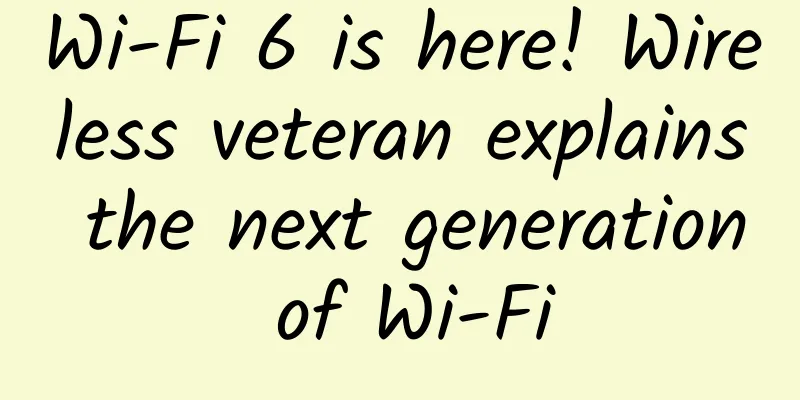How do modern data centers meet the needs of a hyper-connected global economy?

|
There is no doubt that the ultra-high-speed Internet that connects people and business organizations around the world has brought opportunities and challenges to data center providers everywhere. In this article, we will discuss with you how the demand for data storage and transmission speed is advancing at an unprecedented rate. In this article, you will learn how the architecture of the new data center is specifically designed to meet the connection needs of customers, thereby ensuring resilient, secure, and low-latency links to a wide range of business partners. At the same time, we will also take you inside one of Europe's leading data centers to explore how it provides connections locally and internationally. The ultra-high-speed interconnected global economy has enabled unprecedented connections between people, places, organizations, and objects around the world - which undoubtedly brings opportunities and challenges to data centers. On the other hand, with the popularity of mobile video services, the emergence of new business models based on the Internet, and the widespread use of cloud services, there is a strong demand for the storage and transmission of basic data, which has set off a wave of investment and construction of a series of new data centers around the world. The mission of these new data center infrastructures is to meet the growing connectivity needs across platforms and partners. In this article, we will look at the impact of the ultra-fast internet economy on the enterprise data center sector. This research has attracted widespread attention, as drivers such as the current increase in the use of mobile video services, cloud computing and the emergence of new business models related to the Internet of Things continue to create and drive demand for data storage and transmission around the world. This has led to major high-tech companies such as Facebook, Google and Apple, as well as many established hosting service providers, investing in the establishment of numerous new data centers. At the same time, the research project also examines how to implement the specific design of the new data center architecture to meet customer connectivity needs, thereby ensuring resilient, secure, and low-latency links to a wide range of business partners. In practice, this means allowing comprehensive and seamless collaboration to switch data across the network in the most efficient way. This study focuses on the main customers of data centers, including telecommunications networks, super users, content and media suppliers, enterprises and cloud service providers, to understand how these enterprise organizations take advantage of ultra-high-speed connections to meet their business needs. The article introduces Telehouse Data Center's North Two data center in Europe, which is located in London's Docklands industrial park. Its 11-story building provides a total area of 24,000 square meters for its customers. It is a classic example of how modern data centers provide extensive connections for local and international customers. Current data center providers will have to think carefully about their forward-looking planning to proactively meet the range of customer demands brought about by the ultra-fast connected economy. It is predicted that connectivity and scalability may be key considerations for data center customers in the medium term, so data center providers must be increasingly flexible in considering data transmission when adding new storage capacity and data.
Data Center Construction Trends The hyper-connected nature of today’s global economy presents enormous opportunities for data center operators. The market for new equipment will continue its upward trend and is expected to reach $32.3 billion by 2020. Rapidly growing data transmission is driving new storage needs, leading to a surge in new data center construction around the world. Different business models need to meet the demand for data storage. For large, cash-rich corporate organizations such as Facebook, Amazon, Microsoft and Apple, huge investments have been made to build new data center facilities, costing hundreds of millions of dollars. At the same time, the market for colocation centers that provide equipment, space and bandwidth to retail customers continues to thrive. Such colocation facilities provide corporate customers with advantages in space, power, cooling and physical security, and these colocation companies still maintain strong sales momentum for those who want to outsource their IT infrastructure to take advantage of the most advanced technology, scalability, reliability and security of colocation centers. The combination of these two types of data center supply has made the investment level of the entire data center industry a strong emerging industry. Indeed, the current data explosion shows no sign of abating, driven by a number of key factors. These include: the relentless demand for mobile video services through social media platforms and over-the-top (OTT) players; the emergence of new business models around the Internet of Things; the move away from locally managed hardware towards cloud computing, and the adoption of more sophisticated data privacy legislation in the European Union. For data center providers, the emergence of an ultra-fast connected economy that connects people, places, organizations and objects around the world like never before presents both opportunities and challenges. While demand for data storage is likely to continue to boom, rapidly evolving communications technologies may require new thinking around data center architectures. Forecasted trends include the emergence of so-called “edge” data centers, which have the potential to provide enterprises with a highly distributed customer base, enabling faster access to applications and more processing power. The growth of mobile content, cloud services and the emergence of IoT-enabled networks in both the general consumer and enterprise sectors means that the “edge” of data centers needs to be closer to users to reduce latency and make data transmission more cost-effective. This may present challenges to the location and size of new data center facilities. With renewable energy increasingly providing sustainable efficiencies within data centers, this openness is already starting to make a difference to businesses and their reputations. Demand drivers in the data center sector So what is driving this continued demand for global data storage? First, it’s the video web – the convergence of video streaming, high-speed networks and interactivity that enables consumers to communicate, share or receive information over the Internet, anywhere, at any time. Video web has become one of the most dominant trends of the modern era, transforming video content from long movies and broadcast TV shows into segmented or “clips” and social network annotated databases in a short period of time. Today, individuals and businesses are actively pursuing new combinations of video and social networks through a wide range of entertainment and communication. This has led to the creation of unprecedented amounts of data, which requires reliable, predictable and low-latency performance across networks. The Visual Networking Index, produced by network equipment expert Cisco, tracks and predicts the impact of visual network applications and reveals future data challenges. The latest version of the Visual Networking Index released earlier this year predicts that by the end of 2020, global annual IP traffic will reach 2.3ZB. Overall, from 2015 to 2020, global IP traffic will grow at a compound annual growth rate of 22%, and monthly IP traffic will reach 25GB per capita, while the monthly per capita IP traffic in 2015 was 10GB. The data is underpinned by some very clear trends in the Visual Network. Average Internet traffic is growing rapidly due to increases in busy hour Internet traffic – the hours when most Internet users are online at the same time (usually between 7-11pm). This growth is likely to place greater demands on network capacity capabilities. At the same time, smartphone traffic will surpass PC traffic. Cisco reports that global fixed broadband speeds will nearly double to 47.7 Mbps by 2020. According to the report, by 2020, it will take more than five million years to watch all the videos uploaded to the Internet every month. By 2020, one million minutes of video content will be transmitted through the Internet every second. This data is undoubtedly astonishing, and even a bit conservative. Specific applications in the digital video and gaming technology categories are expected to grow exponentially. For example, Internet video surveillance could grow tenfold by 2020. Meanwhile, virtual reality traffic is expected to grow 61-fold over the same period, driven by the emergence of location-based augmented reality gaming. Internet video was identified as another fast-growing demand area, and is expected to account for a quarter of fixed consumer Internet video traffic by 2020, according to the Cisco report. Today’s consumers are producing and consuming video in new ways, putting pressure on WAN links in data centers around the world. But with the advent of the Internet of Things (IoT), billions of devices are embedded with electronics, software, sensors, actuators and network connectivity, enabling them to collect and exchange data, an even greater opportunity is emerging. IoT has already begun to build smart heating and lighting networks in modern homes, and is increasingly being used in industrial settings such as factories and energy grids. For data centers, the IoT will mean a staggering increase in incoming traffic, with data from multiple sensors requiring more bandwidth than current infrastructure can manage. According to information provider IHS, the IoT market will grow significantly, reaching 30.7 billion connected devices worldwide by 2020 and 75.4 billion by 2025). Some blue-chip industrial organizations are already using IoT technology to transform the products and services they offer. For example, aviation engine giant Rolls-Royce has been able to collect and transmit performance data to the field since it embedded sensors into its aircraft engines. Jet engines can typically generate several terabytes of data. Active monitoring of this data can achieve faster resolution in the event of a fault and minimize unnecessary maintenance. If an abnormality is detected, the maintenance team and spare parts team can take immediate action after the aircraft lands. This approach has expanded Rolls-Royce from an aircraft engine manufacturer to a service-based supplier, allowing Rolls-Royce to charge customers by the hour, representing a trend known as "servitization". Many traditional product-centric companies are realizing revenue opportunities by developing service-oriented relationships with customers, such as organizing customer relationships on the basis of service contracts, where customers pay for negotiated business outcomes rather than a piece of equipment. As more and more vehicles are connected to the Internet of Things, in contrast to the traditional car sales model, carmakers are increasingly discussing "mobility as a service". But in each case, service companies need to collect, transmit and interpret large amounts of data. In the past few years, the global cloud computing business has been surging. And Cisco predicts that by 2020, cloud business will account for 92% of all data center business. Cloud service providers need to provide "always online" services and host them in a secure environment so that they can provide low-latency access to corporate customers in the most efficient way. The task of data center providers is to meet this booming demand, especially by providing highly connected data center facilities to provide corresponding data processing systems for business partners and corporate organization customers. Telehouse North Two Data Center Investment Case Study These trends are the main drivers of the ultra-high-speed interconnected economy and have put enormous pressure on data center infrastructure, forcing current enterprise organizations to add additional capacity. Telehouse, owned by telecommunications operator KDDI, announced the launch of the first phase of Telehouse North Two data center earlier this year. Its new data center in London will provide customers with a total area of 24,000 square meters of data center in an 11-story building. It is located in Telehouse's existing Docklands campus, which has a total area of more than 73,000 square meters in London. North Two is fully integrated within the Docklands campus, enabling existing and new customers to take full advantage of connectivity services across a wider range of sites. The investment is the result of forward-looking business planning by data center operators, proactively meeting the needs of the hyper-connected economy. For Telehouse, these demands can only be met through the dual considerations of additional capacity and unparalleled levels of connectivity. In practice, this means allowing organizations across the system (including telcos, hyperscalers, media companies, content delivery specialists, cloud providers, financial institutions, trading exchanges and enterprises) to collaborate seamlessly and switch data across networks in the most efficient way possible. To achieve this, the Docklands Campus North, where Telehouse North Two is located, is designed as a connectivity hub. It hosts over 530 carriers, ISPs and ASPs within London alone, making it one of the most connected locations on the planet. Leveraging connectivity from a location like this is becoming an important part of an organization’s comprehensive IT strategy, especially those with a strategy that requires low latency connectivity to the widest audience. The campus can support those clients who need to connect to a variety of data centers locally or want to connect to an international network of sites. In an economy of ultra-fast connectivity, organizations will be able to enjoy the many benefits of this widely connected system as customers look to take full advantage of the opportunities this structure offers. Historically, Telehouse has been a pioneer in the concept of carrier neutrality, building an ecosystem for carriers and ISPs. The carrier ecosystem allows enterprise customers to easily connect in one place with the lowest latency. This model is evolving, creating a "new ecosystem" among Infrastructure as a Service (IaaS) and Software as a Service (SaaS) providers, content providers, mobile operators and their users, consumers and enterprises. Consumers and enterprises are increasingly concerned about whether their providers can store data and connect to the network, encouraging users to carefully consider their data center selection for cloud and Internet services. But what does it mean to be across multiple vertical sectors in practice? For example, for telecom and mobile networks, both enterprises and end users need to increase data volumes. End users are consuming more video content and cloud applications, so mobile providers such as O2 and Vodafone use data center ecosystems to connect to a large number of Internet exchanges, international networks and national ISPs to serve as many customers as possible. Traditional network providers are also seeking new revenue opportunities by moving larger clouds and applications between enterprise data centers and branch offices. As a result, network customers are increasingly demanding data center infrastructure that supports access to a wide range of services through access to a wide range of potential enterprise customers, leading Internet exchanges, ISPs, and cloud service providers. Access to emerging markets is also an important requirement, with low-latency links to global data centers in other parts of the world. These connectivity requirements meet the need for data centers with flexible and scalable architectures. Content and media providers, creators and distributors of digital information have become increasingly important drivers of the ultra-fast interconnected economy, particularly as Internet-defined over-the-top (OTT) players and services emerge such as WhatsApp, Netflix, Facebook and Google. As mentioned previously, the growth in video-on-demand consumption means that consumers now expect content to be available anywhere, anytime. This is due to the continued rise in smartphone usage, as devices become more powerful on 3G and 4G networks, with 5G infrastructure also on the horizon. Mobile device usage has changed the way consumers interact with digital outputs, and they expect services to be available on demand, on high-speed and high-quality platforms. Content and media providers must ensure that their content is easily accessible and relevant to their audiences. The key enablers for this are speed and quality of delivery, as well as the ability to start small to grow the user base quickly. Again, in this market, connectivity means seamless links with customers and alternative service providers to expand network coverage. This needs to be maintained through infrastructure that enables OTT players to grow their business in a scalable and reliable manner. From a data center perspective, this is a collaborative environment where all media and platforms are interconnected, and ensuring delivery speed, consistency and quality is critical no matter where consumers interact with brands. Of course, the shorter the distance the data needs to be transmitted, the more cost-effective it is. Enterprise customers have their own challenges, especially those that need to manage growing amounts of big data. More and more companies are leveraging cloud computing technology to take advantage of the opportunity to move data from traditional on-premises systems and software to a software-as-a-service (SaaS) model delivered by a cloud platform. The rise in data consumption on mobile devices provides enterprises with the opportunity to reduce their total cost of ownership by providing applications to their end users through cloud services, making it convenient for users to access them anytime, anywhere. To do this, they need an infrastructure that allows end users on-premises to quickly and easily access applications and data, as well as ensuring seamless communication between the enterprise and branch offices. Financial services companies in particular need to face practical challenges such as big data, cloud computing and mobile technologies, while also responding to growing regulatory pressures. For example, banks and investment companies need efficient access to centralized data centers in order to adopt IT service delivery models such as virtualization and cloud computing, while requiring rapid scalability of data volumes. Connectivity also needs to support ultra-fast connections to financial markets, news aggregators and big data experts, allowing financial service providers to take full advantage of important revenue-generating processes. Therefore, enterprises need modern data centers that can provide access to a wide range of platforms in a secure environment, as well as the opportunity to exchange information and facilitate collaboration with business partners. Providing enterprises with a low-latency environment and fast connections with financial markets, news aggregators, and big data experts in turn provides IT departments with the ability to fully resilient infrastructure and focus on generating revenue. Finally, cloud service providers themselves are responsible for providing storage or software services to customers from remote facilities over the Internet. As the need for flexibility in business work will continue to drive the adoption of cloud services, cloud service providers need to provide customers with easy integration, on-site data storage and seamless access to data, as well as data security protection. The development of mobile technology means that users want to be able to access content anytime, anywhere. As a result, cloud service providers put ensuring maximum uptime, business continuity and security at the center of their business model, enabling them to provide an "always on" mission-critical service. This requires flexible and powerful data center solutions that must have dynamic and accessible bandwidth. More and more cloud service providers are also seeking to be in well-connected data center hubs because they want to be able to access new markets and establish business opportunities with end users. in conclusion Connectivity is key to data center performance In summary, it is clear that the ultra-fast connected economy underpins a vibrant data centre sector with plenty of room for growth in the global economy. But technological advances in areas such as mobile video services, cloud computing and the emergence of new business models in the Internet of Things mean that the need for data storage and transmission is moving forward at an unprecedented pace. The challenge facing data centre providers is to ensure they have the capacity and flexibility to meet customer demand. A core driver of this is the growing demand for connectivity – both for customer access to platforms and for partners. Only through continued investment in modern and efficient data centre infrastructure can the ultra-fast connected economy reach its full potential. |
<<: How operators benefit from NaaS
>>: Application and development of machine learning tools in data centers
Recommend
BuyVM Miami KVM is online, AMD Ryzen 3900X + NVMe hard drive starting at $2/month
BuyVM announced yesterday that it has launched it...
Lisa Host: Los Angeles Cera Data Center CN2 High Defense VPS monthly payment starts at 40 yuan, support 2 yuan/day trial
I shared information about Lisa hosts in the midd...
South Korean court rules that network operators can charge broadband fees to big data users like Netflix
As the video streaming market explodes, a South K...
Web3.0 Technology: Unlocking the Future of the Internet
The Internet, the dynamic force that has reshaped...
Do you always feel that the Internet speed is slow? You may be in trouble
We say that there are many reasons for slow Inter...
OneTechCloud adds 1Gbps high-bandwidth VPS in Hong Kong, 20% off monthly payment starting from NT$52
OneTechCloud has recently added Hong Kong Interna...
New 5G LAN technology advances QoS across the enterprise
As enterprises integrate 5G technology into their...
SDA's full-view and in-depth operation and maintenance strategy accelerates the improvement of customer operation and maintenance capabilities
Under the wave of digital transformation, enterpr...
Detailed explanation of SSL protocol communication process and symmetric encryption and asymmetric encryption in HTTPS
[[276508]] Symmetric encryption The so-called sym...
China Telecom will commercialize 5G independent networking in more than 300 cities
On November 7, Li Zhengmao, general manager of Ch...
OneTechCloud: VPS with discounts as low as 20%, Hong Kong CN2/CMI large bandwidth/US CN2 GIA/high defense optional
OneTechCloud is a Chinese hosting company founded...
Edge computing/fog computing and what it means for CDN providers?
CDN is usually a large number of distributed syst...
Ten Tips to Simplify Fiber Optic Cable Installation
Installing fiber optic cable is a complex and tim...
RAKsmart: Cloud servers starting from $1.99/month, VPS hosting starting from $0.99/month, data centers in Hong Kong/Japan/Singapore/Korea/USA
RAKsmart is a hosting company founded by overseas...
5G development still has a long way to go
The construction and development of 5G has gone t...









